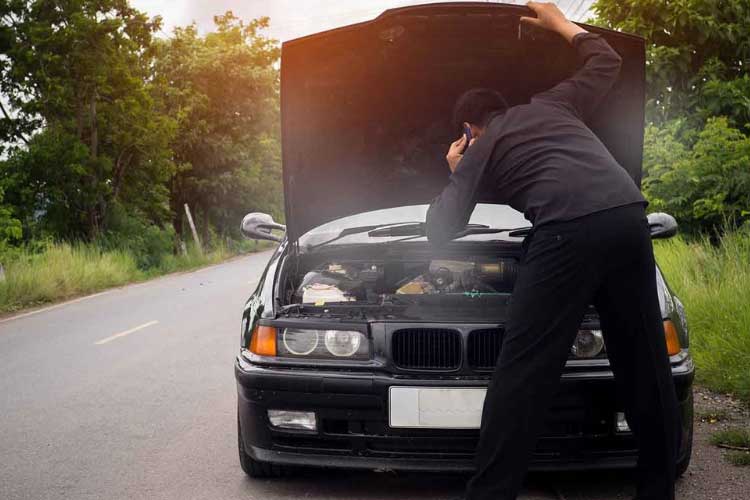Car Overheating After Blue Devil (Causes & Fixes)
So you have a blown head gasket and decided to fix it using the Blue Devil head gasket sealer? But unfortunately, your car has started overheating after using this product as per the instructions on the bottle. And you have no idea why this is happening.
Why is your car overheating after Blue Devil? Car overheating after Blue Devil means the sealer may have sealed up smaller water passages in your engine system, clogged up your radiator, or even plugged up the thermostat. It could also mean that the gasket sealer didn’t work, so overheating which is one of the symptoms of a faulty gasket head, still exists.
We dug deeper into the issue of your car overheating after using Blue Devil head gasket sealer. We uncovered more helpful details that we’re going to share with you in this guide, including how to resolve the overheating condition.
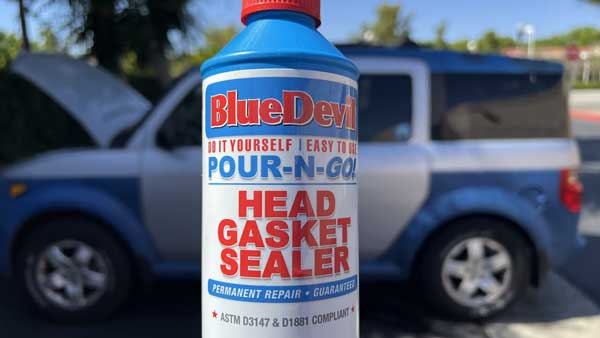
Why your car overheats after Blue Devil?
Blue Devil (we’ll refer to it as BD in this guide) is designed to help you seal leaks in your engine coolant system and prevent overheating. If your car still has overheating issues after you’ve used this product, there could be a variety of underlying issues at play as outlined below:
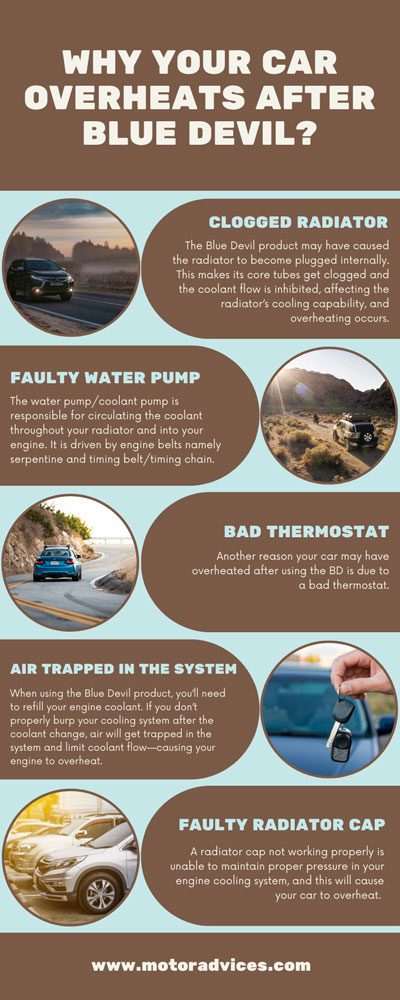
Clogged radiator
The Blue Devil product may have caused the radiator to become plugged internally. This makes its core tubes get clogged and the coolant flow is inhibited, affecting the radiator’s cooling capability, and overheating occurs. In this case, you’ll need to replace the radiator.
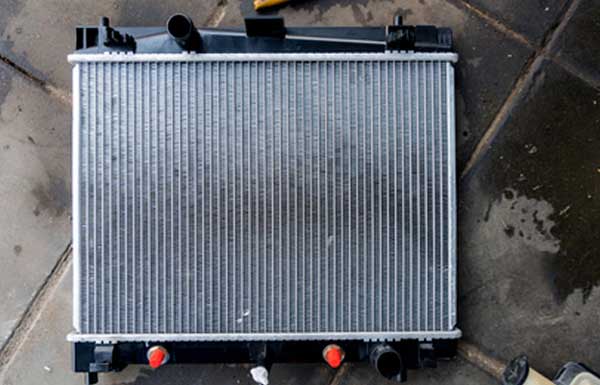
Faulty water pump
The water pump/coolant pump is responsible for circulating the coolant throughout your radiator and into your engine. It is driven by engine belts namely serpentine and timing belt/timing chain.
Unfortunately, the BD can also make the water pump faulty. If its shaft seal or shaft bearing fails and destroys the seal, the coolant circulation stops, and your engine overheats. Also, if pump impeller develops issues, it causes the engine to overheat.
Bad thermostat
Another reason your car may have overheated after using the BD is due to a bad thermostat. Many car owners have had a bad experience with this chemical sealant plugging up or running their thermostats or making them stuck.
The thermostat acts as a temperature control device in your engine cooling system. When it goes bad, it can’t constantly monitor coolant temperature and coolant can’t flow. One of the failing thermostat symptoms is an overheating engine!
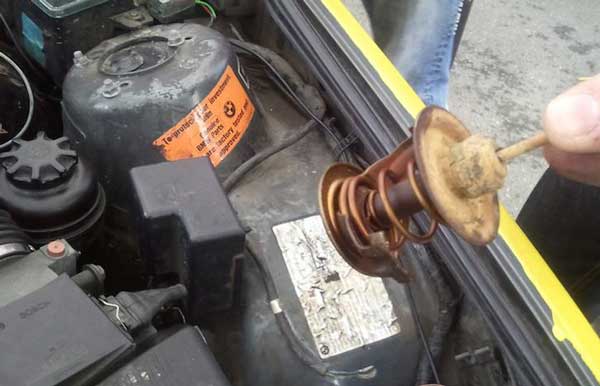
Thankfully, a thermostat is a pretty cheap fix and will cost you roughly $20 bucks. It’s also quick to fix in less than 30 minutes.
Here’s a real-life scenario of Blue Devil messing up with the thermostat and causing overheating. The motorist explains that once the mechanic replaced the thermostat, the overheating issue was resolved and his car started running perfectly again!
Air trapped in the system
When using the Blue Devil product, you’ll need to refill your engine coolant. If you don’t properly burp your cooling system after the coolant change, air will get trapped in the system and limit coolant flow—causing your engine to overheat.
You can try getting rid of the trapped air bubble by starting up your engine with the radiator cap off and then elevating the car (drive the car front up some ramps).
Any air present should easily escape from the engine to the radiator where it will easily escape. Check this discussion from experienced motorists for more insights into this topic.
If you do this correctly, you should be able to easily see the coolant fluid flow when thermostat opens. Periodically squeezing the upper hose during the bleeding process may also help.
Faulty radiator cap
A radiator cap not working properly is unable to maintain proper pressure in your engine cooling system, and this will cause your car to overheat. Check the condition of the radiator cap and replace it with a new one if necessary.
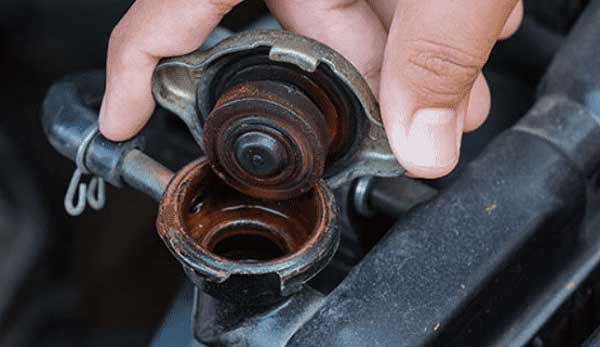
The BlueDevil didn’t work!
In some cases, the gasket sealer may fail to work, meaning the underlying gasket issues don’t get resolved and symptoms like overheating are still prevalent in your car.
Using this “magic elixir in a can” to fix your failing head gasket may not always do a good job of fixing the leaking gasket.
Instead, it may only make matters worse by gunking up your coolant sensors, locking up your radiator, plugging up the thermostat, blocking up small water passages in your car system, or even fouling the water pump.
Also, if you didn’t use the BD correctly, precisely as explained in the instructions on the bottle, it will fail to work and leave you with even more expensive problems to fix.
For instance, the sealer comes with radiator flush and requires you to flush your radiator well before using it, affecting how it works. You also need to remove the thermostat before using this product.
We found this helpful showing you how to use BlueDevil gasket head sealer the correct way
How to fix a car that overheated after Blue Devil?
Diagnosing your car will help show exactly what could have caused the overheating after the gasket sealant. We’ve already discussed the likely culprits in the previous section, so you have an idea of where to look into.
However, this job is best left to an experienced mechanic who will inspect your car for the cause of overheating and fix it for you.
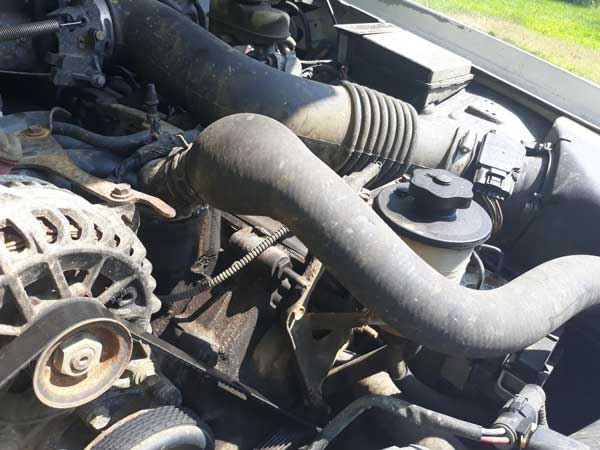
That said, the most likely fixes for this problem include:
- Start by doing a FULL radiator flush to get rid of all the “junk” wreaking havoc in your engine. Flush it out as best you can with distilled water (not tap water). The whole system needs to be clean!
- You may also want to disconnect the heater hose inlet and outlet and flush it out as well. This is helpful since the heater core may have become clogged up as well.
- Follow the correct fix for the head gasket problem—i.e., get a new head gasket. No additive will help permanently fix the head gasket, leaving you replacing the gaskets as the only option.
- Get a new radiator. The additives in the BD may have clogged up your radiator cores. You may also have a clogged radiator that needs fixing.
- Replace your thermostat as well. It may be stuck or open following the sealer product use and making the gauge read abnormal temperatures.
- Get a new water pump. Once the BlueDevil disaster has started striking, your water pump will be the next to go, so you’d also want to replace it with a new one early enough.
- A tune-up would also be a necessary part of this fix. We recommend getting new plugs and wiring for your engine.
- Also, check your timing and serpentine belts. If you haven’t serviced them for some time, do it at this point as well. You don’t want to imagine investing so much into the motor and then ending up losing the timing belt!
Above all, it’d be best if you can avoid using gasket sealers to fix your car radiator leaks.
While these products can offer a cheap solution, they may make your problem grow from a simple fix to a more expensive fix—or even possible damage to your car engine!
Can a Blue Devil clog a radiator?
There is a high chance that the Blue Devil gasket sealer may clog up your radiator. The chances are even higher if you don’t follow the exact procedure the manufacturer outlined on the sealant bottle.
Even in cases where you use the product as directed, you may still have issues with this sealer damaging your thermostat, messing up the hoses, and even clogging your radiators.
Motorists who have used this product before are widely divided on its effectiveness. One side swears by it while others have had bad experiences with it. You can follow these interesting discussions from different motorists’ opinions regarding the product here and here And also here.
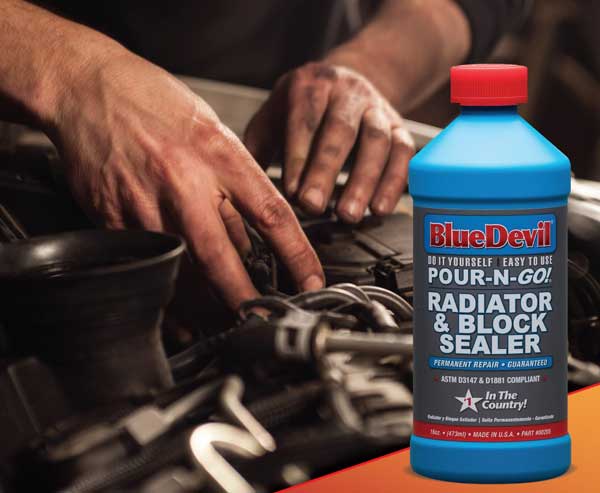
In our opinion, you may want to avoid the risk of the problems that this can will cause to your car by simply avoiding the cheap fix.
Instead, consider making the necessary repair which is to replace your faulty head gasket. There’s no risk in replacing the gasket as there is in using the sealer product.
Will Blue Devil stop car from overheating?
The BlueDevil head gasket sealer is designed to seal any leaks in your cooling system and thus help prevent overheating.
You just add it to your engine coolant reservoir (radiator) and it will do the rest. In other words, it’ll seal the hoses, radiator, water pump, and various other components that make up the cooling system.
However, keep in mind that BlueDevil only offers a temporary fix for the leaking issue until you perform a more permanent repair on your car.
If your engine is already overheating, then you can use the BlueDevil Engine Cool (another BD product) to stop it from overheating.
The Engine Cool works by reducing the coolant surface tension so it can more efficiently transfer heat away from the engine and into the radiator.
Can you use BlueDevil head gasket sealer without removing the thermostat?
Using the BlueDevil sealer without removing the thermostat is simply going against the manufacturer’s instructions.
Removing the thermostat is necessary to ensure free flow of this product and ensures you get the best results.
If you ignore this step, the effectiveness of this product will likely be limited. And you may also end up messing it up and causing the overheating problem as we discussed earlier in this guide.
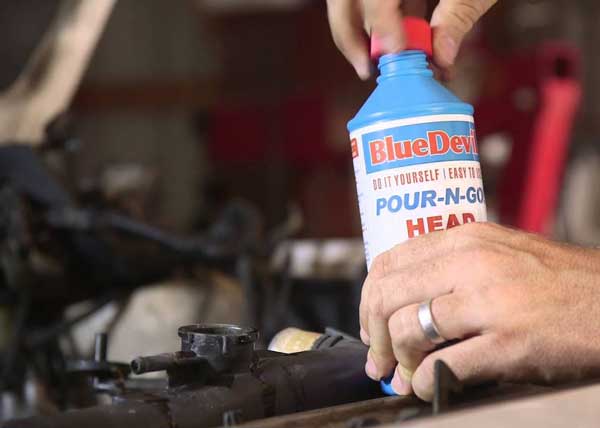
Just make sure you follow what the manufacturer recommends and put the thermostat back on after applying the sealant.
If for some reason you can’t remove the thermostat, you may want to look for other gasket sealers that don’t require removing the thermostat first.
How do you remove Blue Devil head gasket sealer?
You can easily remove the Blue Devil gasket sealer by spraying a sodium silicate solvent such as potassium hydroxide or sodium hydroxide on it.
The chemical easily dissolves the sealant, after which you can easily scrap it with the help of a plastic scrapper.
Don’t get tempted to try removing the BD by scrapping it off. This method can potentially scratch your engine block.
Combine the minor scratch with heat and the block may develop a crack with time!
Car overheating after using BlueDevil to fix a head gasket leak can be a frustrating and potentially expensive problem. At MotorAdvices, we have articles that address a range of issues related to car overheating, including what to do if your car is overheating and leaking coolant, and how to deal with overheating at idle. Our article on car overheating and leaking coolant explains the common causes of this issue and offers tips on how to fix the problem. Similarly, our article on car overheating at idle discusses the potential reasons for overheating when your car is not moving and offers solutions to help you keep your engine running cool. Visit MotorAdvices to learn more about how to prevent overheating and keep your car running smoothly, no matter what the cause.FAQs:
BlueDevil can help seal radiator leaks in your engine when you apply it correctly. but we don’t guarantee that it will always work. It may cause a whole lot of problems that are expensive to fix and even damage your engine. It’s best to just replace the blown head gasket instead of putting your bet on this product.
As many times as you want. There are no limits to many times you can use Blue Devil gasket sealer in your car. You can always use it again and again. Just make sure you carefully follow all the instructions as well as read the warnings on product usage.
If your car is still having overheating issues after changing the head gasket, check if you have low coolant levels. Also, check if cooling components such as the water pump and radiator are faulty. A damaged engine can also cause this problem.
Final Verdict
Car overheating after applying Blue Devil is a common problem experienced by many motorists. The most likely cause for this problem is the chemical messing up with your car’s cooling systems such as the radiator cap, the radiator itself, the water pump, and even the thermostat.
This guide has extensively covered the issue of car overheating after BlueDevil, including why it happens and how to deal with it. Follow the fixes we’ve recommended above to fix this problem before it gets worse and causes expensive damage to your engine.

